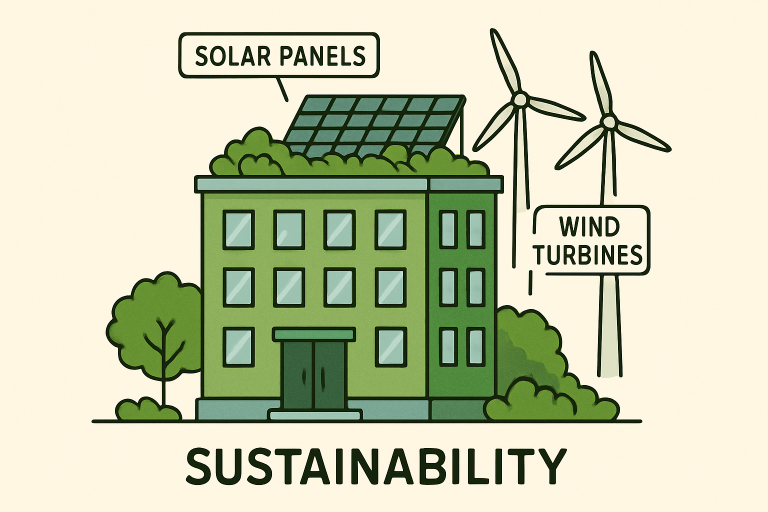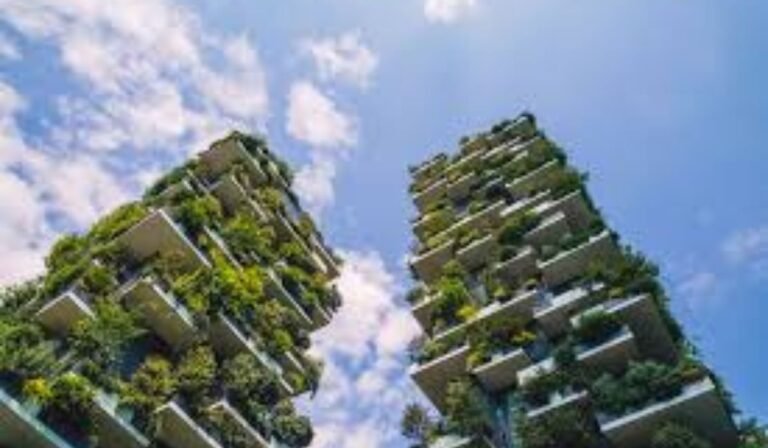Why Sustainable Infrastructure Matters in Today’s World
As cities expand and building needs grow, sustainable infrastructure has become a crucial factor shaping the global construction industry. No longer a secondary concern, the long-term environmental, social, and economic advantages of sustainable building drive the decisions of governments, organizations, and designers alike.
More communities are discovering that prioritizing sustainability delivers immediate benefits—such as reduced operating costs, improved community well-being, and a healthier ecosystem—while also ensuring future generations inherit a livable planet. In this growing movement, Tulsa interior design firms stand out by incorporating advanced green practices into modern design, offering both impeccable aesthetics and future-ready performance.
Around the globe, increased awareness of climate impacts accelerates the adoption of sustainability frameworks. Leading companies and civic leaders are setting ambitious goals for achieving net-zero emissions, enhancing energy efficiency, and reducing waste across all new developments. This push is not simply an ethical imperative—it’s also a practical one, as sustainable infrastructure enhances community resilience, stimulates innovation, and enables long-term economic growth.
Essential Elements of Sustainable Infrastructure
- Green Building Materials: Today’s construction projects increasingly use renewable, recycled, or responsibly sourced materials. From bamboo flooring and reclaimed timber to high-performance insulation and low-carbon concrete, material choices significantly reduce a project’s ecological footprint. Innovative materials, such as bio-based plastics and green-certified composites, are constantly emerging, driven by research and market demand. According to a report from CNN Style, sustainable building design is shaping the future of architecture by prioritizing eco-friendly materials and energy-efficient solutions, setting new global standards for responsible construction.
- Smart Technology: The integration of smart technologies, including IoT sensors, artificial intelligence, and automation, enables real-time monitoring and management of building performance. These tools can significantly reduce energy and water consumption, automatically adjust systems for maximum efficiency, and even predict maintenance needs before problems arise.
- Design Strategies: Futureproofing through design means developing spaces that are flexible and adaptable to change. This includes modular building elements, adaptable layouts, and design principles that accommodate technological upgrades or shifting community needs. Adaptive reuse—transforming existing structures into new purposes—is also a growing trend that curbs the demand for raw materials and reduces waste.
Trends Driving Sustainable Construction
Modern construction is in the midst of a green revolution. Certifications like LEED (Leadership in Energy and Environmental Design) and BREEAM (Building Research Establishment Environmental Assessment Method) serve as benchmarks for sustainable excellence, guiding building owners and architects in designing beyond regulatory standards.
New policy movements, ranging from local green building codes to broad international pacts, raise minimum requirements and direct investment toward innovative sustainability initiatives. This growing emphasis on certified construction practices is paralleled by a surge in investor interest—more investment funds are now earmarked specifically for eco-responsible projects, providing both capital and accountability to the sector.
Data and Research Guiding Sustainable Infrastructure
Compelling data continues to shape our understanding and adoption of sustainable construction practices. Addressing this challenge is essential if long-term climate targets are to be met. Furthermore, recent scientific reviews emphasize the positive impact of sustainable design on occupant health, resource efficiency, and operational costs. These findings are steadily changing industry norms and encouraging the widespread adoption of best practices.
Circular Economy Principles in Modern Construction
Embracing the circular economy means moving away from the traditional “take-make-dispose” model and instead designing for longevity, reuse, and recycling. Leading urban developments are adopting construction methods that prioritize deconstructable structures, material passports, and supply chain transparency.
Global cities like Amsterdam and Copenhagen have become testbeds for large-scale circular building projects, proving that sustainability need not come at the expense of quality or creativity.
Healthier Buildings and Human-Centric Design
The impact of indoor environments on human health has garnered increased attention in recent years, especially after the COVID-19 pandemic highlighted the importance of air quality, daylight, and non-toxic materials. Today’s best practices promote the use of low-emission materials, effective ventilation systems, and biophilic design elements that foster connection to nature, enhance mental well-being, and improve productivity.
In addition to benefiting individuals, these advances can reduce public healthcare costs and increase real estate values, making them a sound investment for developers and building owners alike.

The Role of Public-Private Collaboration
Successful implementation of sustainable infrastructure often hinges on partnerships that unite government agencies, private companies, nonprofits, and research organizations. Public-private collaboration spurs impactful research, provides grants for green construction, and accelerates the deployment of pilot projects at scale.
Examples range from government-funded research on advanced energy systems to joint ventures developing affordable, net-zero housing. These partnerships lay the groundwork for industry-wide transformation, ensuring that sustainable design principles reach diverse communities and markets.
The Future of Sustainable Infrastructure: Challenges and Opportunities
- Barriers: The widespread adoption of sustainable approaches can be hindered by higher upfront costs, a lack of local expertise, challenges in sourcing green materials, and supply chain disruptions. Overcoming these barriers requires supportive policy frameworks, workforce development, and ongoing investment in research.
- Opportunities: New digital tools, innovative bio-based materials, and integrated design processes offer the industry powerful levers for change. The rise of advanced simulation software, digital twins, and predictive analytics is poised to enhance building performance at every stage of a project’s lifecycle.
- Future Skills and Innovation: To thrive in the evolving landscape, professionals must cultivate skills in both design thinking and technical analysis. Continued education—and a willingness to experiment and innovate—will be crucial to solving tomorrow’s sustainability challenges.
The momentum behind sustainable infrastructure continues to grow, fueled by evolving standards, innovative technologies, and a collective recognition that the built environment impacts every facet of life. As stakeholders work together to overcome obstacles, the future holds promise for communities that are not only responsible stewards of natural resources but also leaders in resilience, livability, and prosperity.
